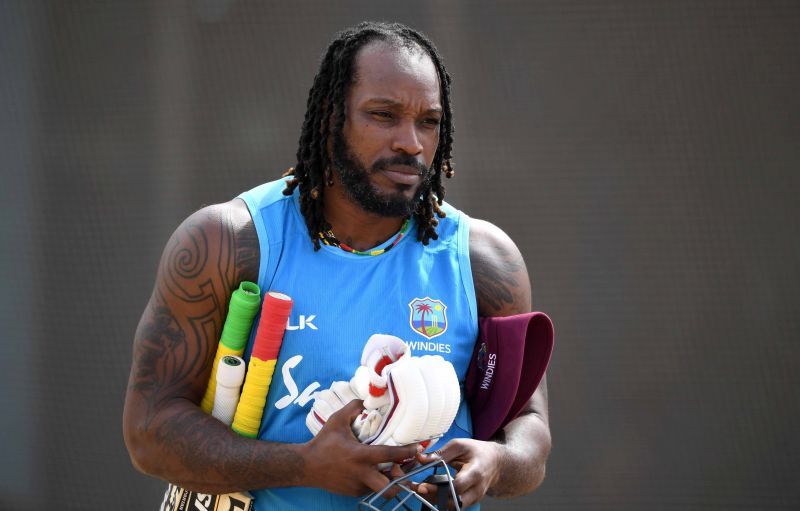
West Indies' high-risk approach could be their kryptonite
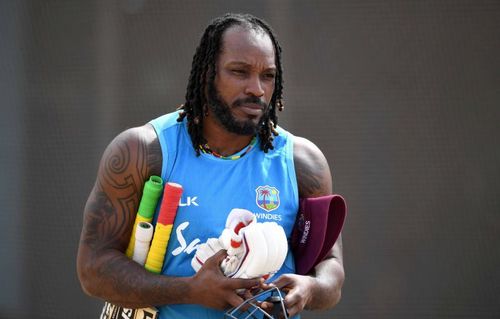
On 31st July 2021, the West Indies, owing to Dwayne Bravo and Jason Holder’s excellence, managed to restrict Pakistan to 157, which even on a sluggish surface at the Providence Stadium in Guyana, seemed quite short of being competitive against the hosts’ power-packed line-up.
However, in contrast to common notion, the West Indies huffed and puffed during their run-chase. In the end, they fell 7 runs short, with Nicholas Pooran and Holder remaining unbeaten.
In the aftermath, there might’ve been a temptation to label it an aberration, albeit an aberration that shouldn’t ideally come about with the kind of firepower the West Indies possess.
Yet, it has happened on more than one occasion in the Caribbean home summer, with the hosts also being guilty of the same against Australia and South Africa. Thus, there seems to be quite an anomaly, at least from the average cricket enthusiasts’ perspective.
After all, how can a team that boasts the likes of Andre Russell, Chris Gayle, Evin Lewis, Kieron Pollard, Nicholas Pooran and Shimron Hetmyer – cricket’s equivalent of the Avengers, struggle so often with the willow and contrive to produce collectively uninspiring outings?
The West Indies haven't flexed their batting muscles fully
Prima facie that could be put down to this particular West Indian side not having played together regularly. While that remains a valid argument, it quickly becomes a moot point when considering they’ve had a bumper home summer, which despite the abandonment of T20Is against Pakistan, is still a significant number.
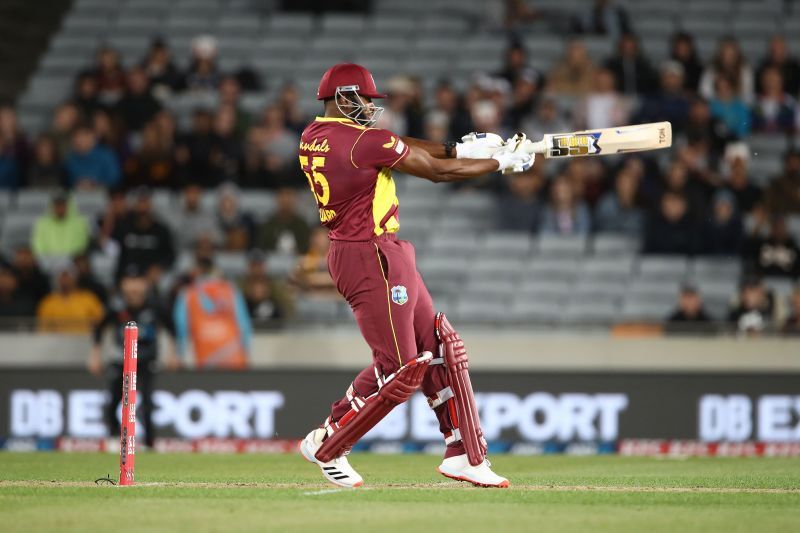
On further introspection, though, the discrepancy becomes clearer and even allows one to pinpoint exactly why the West Indies find themselves in such a predicament. And, to an extent, it also has the potential to undermine everything as they build towards the T20 World Cup.
Over the years, batters of the ilk of Gayle and Lewis have garnered a reputation to churn out hundreds in the shortest format. More recently, both have also started taking their time at the top of the order to set themselves up for the long haul. While that is perfectly alright, considering what they are capable of once set, it might have implications for others in the West Indies’ batting unit.
To place things into context, Gayle has 46 scores under 25 (from 69 innings) in T20I cricket. During these 46 games, he has gotten dismissed between 10-25 on 17 occasions, meaning that his dismissal has directly transferred the pressure onto the incoming batter.
As far as numbers are concerned, those are pretty damning too. Whenever Gayle has gotten out in the 10-25 run phase, his strike rate hovers around 101.50. When he has been dismissed in the 0-25 run period, his strike rate is quite abysmal – 87.35. His proclivity to only deal in boundaries doesn't help either.
Yet Gayle, unlike most of his contemporaries, has the propensity to click into over-drive. And when he does that, he blasts through whatever obstacles are kept in front of him.
Similarly, Lewis is a slow starter and might force those around him to take greater risks, especially if he is getting out in the 10-25 run range. In that phase, he strikes at 100.62. Fortunately, though, he has been dismissed only 9 times during that period, which coupled with his tendency to score big after crossing 25 (19 out of 44) doesn’t make him a liability.
The problem, though, is when the other West Indies batters start replicating the method Gayle and Lewis use. Not only does that put undue pressure on the West Indies’ middle and lower order, it is also a mechanism that simply hasn’t worked for some of their batters (read Hetmyer and Pooran).
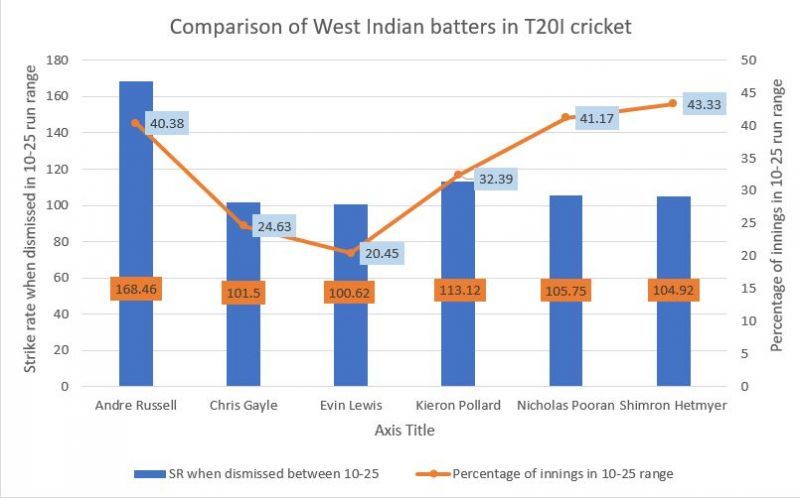
In the past few years, not many batters have instilled as much fear in the opposition as Hetmyer and Pooran. However, most of that has taken place in franchise leagues, when these youngsters (relatively) haven’t had to worry about the run-scoring.
Instead, they’ve been given the license to express themselves, with teams such as the Delhi Capitals, the Guyana Amazon Warriors, the Melbourne Stars and the Punjab Kings benefitting. When playing for the West Indies, the dynamics seem to change drastically.
In all T20 cricket, Hetmyer strikes at 130.95, whereas Pooran’s strike rate is just a tick over 142. When turning out for the West Indies, those numbers dwindle to 116.91 and 124.07, respectively. The average also takes a dive, with Hetmyer averaging 19.96 (as opposed to 25.15) and Pooran averaging 22.64 (as opposed to 24.39).
Moreover, Hetmyer and Pooran don’t possess a skill-set similar to that of Babar Azam or Virat Kohli. The West Indies duo are more likely to be classified as butchers of the cricket ball rather than surgeons, meaning that picking the gaps and knocking the ball around isn’t their forte.
Unsurprisingly, they rely on a lot of boundaries and with those not very common in the middle phases, they get stuck at the crease. The numbers drive home that school of thought too. While Hetmyer has a boundary percentage of 53.43 in T20Is, Pooran's corresponding tally stands at 64.03.
Hetmyer has crossed 25 only 7 times out of 30. In the rest of his innings, he strikes at 101.2. When he gets past the 10-run barrier but fails to breach the 25-run mark, he strikes at 104.92 – something that puts immense pressure on the others to increase the tempo.
The statistics paint a similar picture for Pooran. While he has gotten past 25 on 9 occasions, he has also failed to inject impetus at the outset. If he is dismissed in the 10-25 range, his strike rate is 105.75, whereas if he is dismissed below 25, the tally drops to 100.35.
That, coupled with the fact that these two West Indies batters rarely make their starts count, puts enormous run-scoring burden on players such as Pollard and Russell.
West Indies place huge responsiblity on Andre Russell and Kieron Pollard
Speaking of Pollard, the West Indies T20I skipper is also a notoriously slow starter. However, he has the ability, the power and the tactical nous at the death to offset it. If one were to look at raw numbers, though, he might also need to be a little swifter off the blocks, for his strike rate when being dismissed in the 10-25 range (23 times out of 71) is only 113.12.
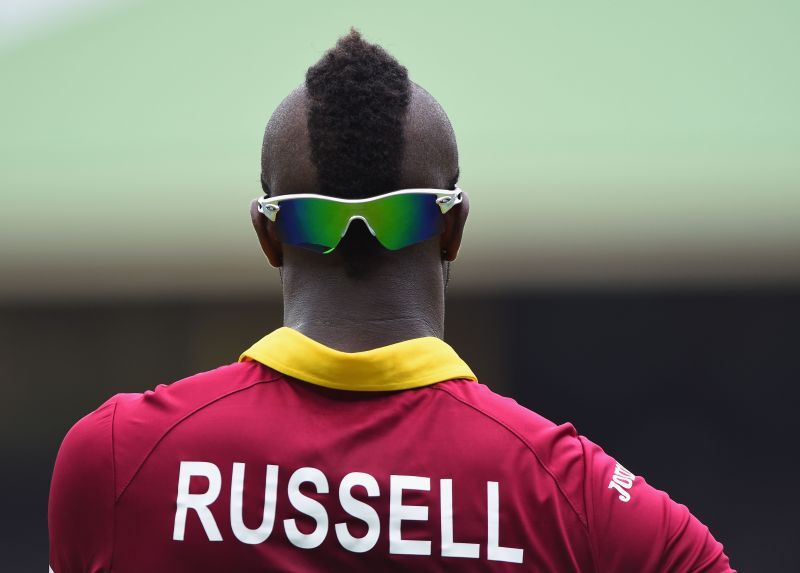
Russell, on the other hand, plays a completely different brand of cricket. In fact, he is arguably the breath of fresh air in the West Indies’ middle order. The all-rounder, irrespective of the situation, rarely takes a backward step – something that is backed up immensely by stats.
Though Russell has only crossed 25, 6 times out of 52, he has ensured that he hasn’t become a liability at the crease. He has embodied the boom or bust approach to the letter, striking at 136.76 when being dismissed under 25 and a whopping 168.46 when he has gotten out in the 10-25 run range. This style of batting has caveats attached it too, although it is arguably the need of the hour with the kind of role Russell is asked to fulfill.
Thus, there is enough to indicate that the West Indies’ approach at present, which involves taking time before teeing off, could be fraught with extraordinary risk. Not only do a couple of batters (at the very least) have to make up for lost time during the middle phases and the death overs, they also need to ensure that they’re not throwing their wickets away, for they have consumed so many deliveries.
In T20I cricket, the worst outcome is for any batter to chew up plenty of deliveries, only for him/her to then get out. If that happens, the next batter needs to ensure that run-scoring is emphasized almost instantly. The pressure is also pretty unbearable, for one batter has to do the heavy lifting for two or maybe three others.
At their best, the West Indies can make this approach work, mainly due to a couple of reasons. Firstly, Gayle and Lewis can tear apart any bowling attack once set. And, secondly, because Pollard and Russell can do the same at the end.
When a sliver is off it though, it could force the West Indies to insipidly crawl towards the finish line – an element that simply isn’t befitting of a side blessed with such individual match-winning quality.
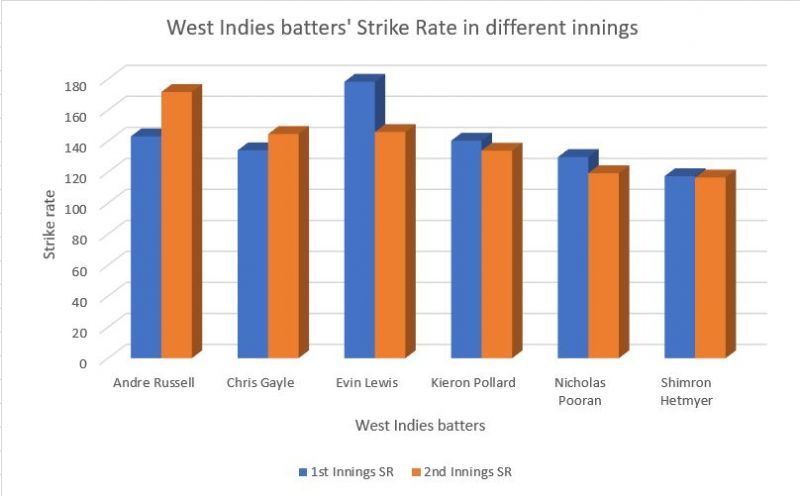
Of course, it is also a method that could be found out when chasing scores in the 155-180 range, for it leads to indecisiveness, with regards to when the opposition needs to be attacked. On other occasions, or specifically when the West Indies are batting first, it could still work because of the absence of a gradually escalating required run rate.
This philosophy could also come a cropper in the UAE, where pitches might become slower as the game progresses and as the death overs approach.
Additionally, against quality bowling attacks, they might not get as many opportunities – something that was laid bare to witness against Pakistan in the 2nd T20I. Furthermore, this modus operandi completely ignores that Pollard and Russell, who might seem supernatural due to their brute strength, are still humans and prone to bad days at the office.
To that end, the West Indies’ botched run-chases this home summer don’t seem as much of a surprise, for they’ve often left themselves with too steep a mountain to climb. However, the West Indies would also do well to treat it as a warning sign - one that could threaten their defence of the T20 World Cup.
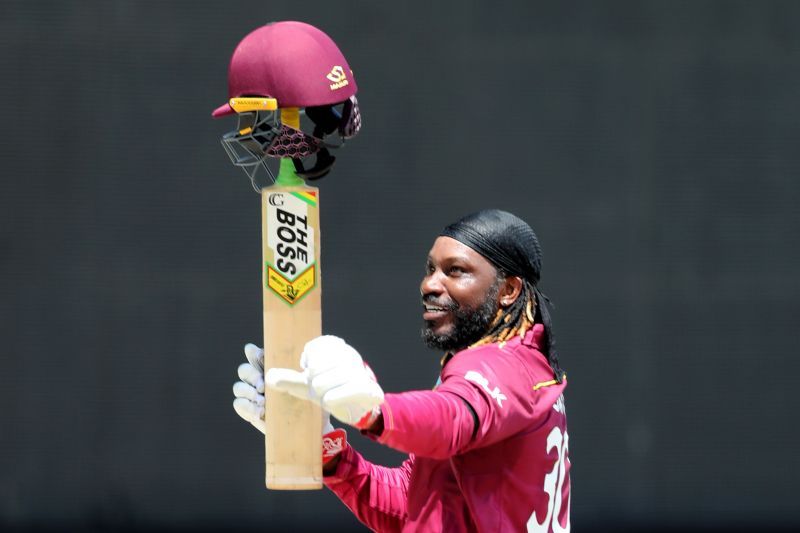
Having said that, the West Indies could still waltz to the centre and disdainfully dismiss the chatter about their strike rates. When they are on song, they can blow any opposition, including England and India out of the water. They are simply that good.
Yet, five years on from that famous “remember the name” moment, the West Indies might want to go about their business a little more serenely and not depend on such maverick moments of magnificence.
As funny as it may sound, a lot could depend on how quickly the West Indies’ biggest gunslingers decide to wield their weapons (willows, in this case). At present, though, there might just be enough to hint that the West Indies' current high-risk brand of cricket could act as the kryptonite to their galaxy of T20 superheroes.
And, if it indeed unfolds in that manner come the T20 World Cup, it would certainly smack of irony.
Also Read: Chris Gayle needs to come out swinging in his last hurrah
(Note: All stats used are from before the 3rd T20I between Pakistan and the West Indies on 1st August, 2021)